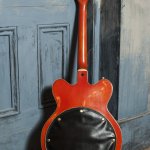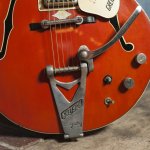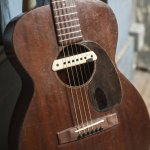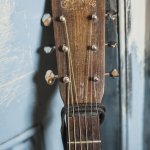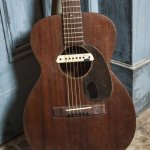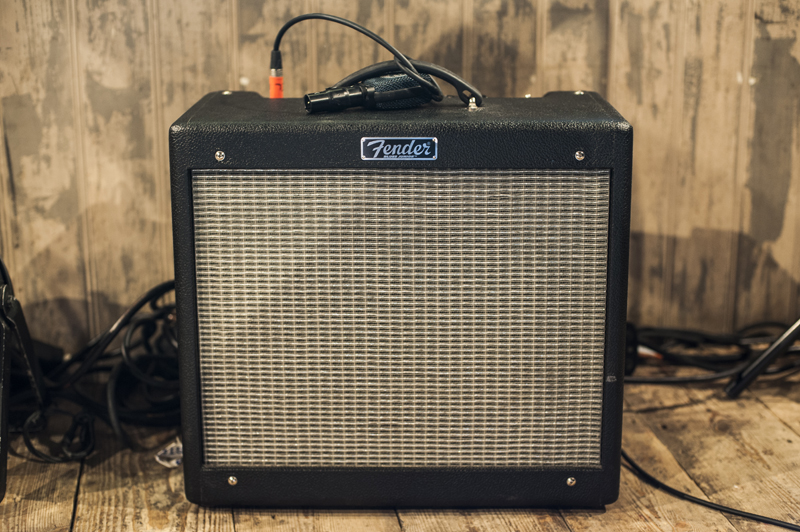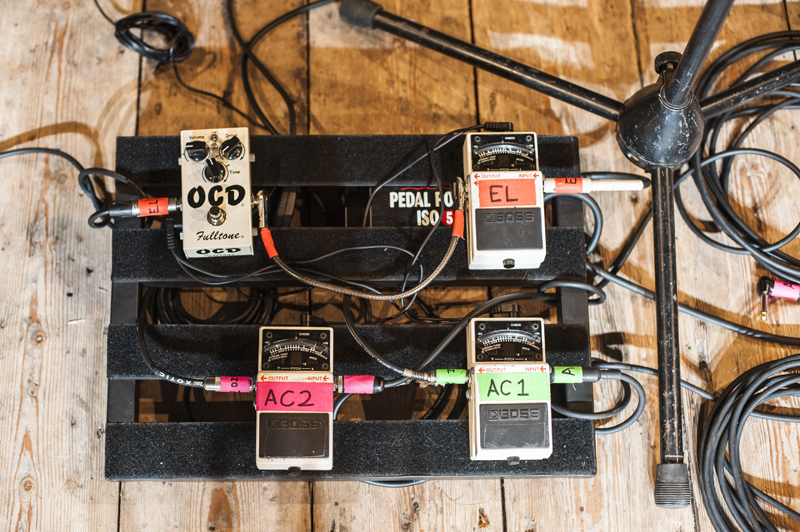Interview: Gabrielle Aplin talks Light Up The Dark and "old guitars with stories"
If you’ve switched on your radio lately, you’ve heard Gabrielle Aplin. The English singer-songwriter with the world at her feet tells all about her collaborative new album and the “old guitars with stories” that she used to record it…
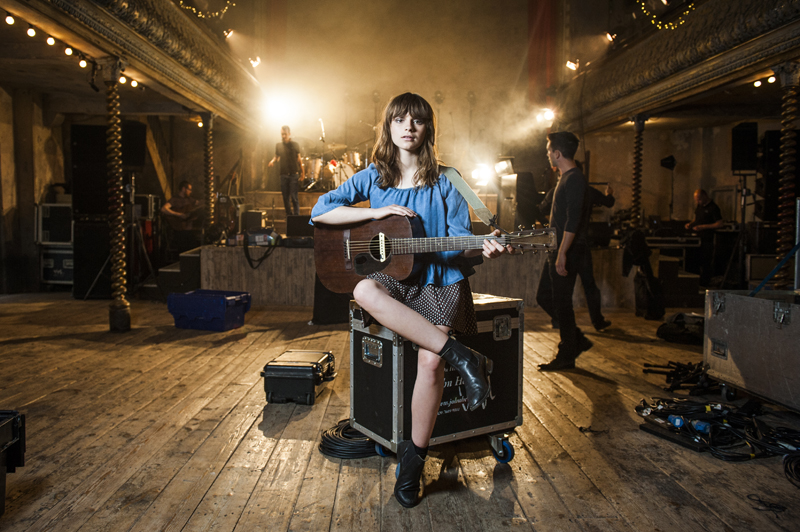
“I’ve been doing lots of sleeping today,” admits Gabrielle Aplin at the outset of our conversation. Yet though it’s been more than two years since her debut album, English Rain, went straight in at number two in the UK album chart, the 22-year-old certainly hasn’t spent the intervening months resting on her laurels. 18th September saw Aplin release her second studio long-player Light Up The Dark, a confident follow-up that looks set to make the Wiltshire native, who has already amassed 1.5 million singles sales and tens of millions of Spotify and YouTube plays, an even bigger star.
Though Aplin’s wonderful vocals remain front and centre, Light Up The Dark feels more ambitious and experimental than English Rain, with a more fully-realised sound than a typical solo singer-songwriter record. We discover that collaboration was key, with guitarist Luke Potashnick of The Temperance Movement providing a space for the album to take shape.

“I started writing it in January last year; we ended up writing and recording the whole album in his house,” Aplin explains. “It just really naturally fell out… it was weird. I think I’m at my most comfortable writing on my own, but what was great about writing with Luke was that it was very relaxed, it was a place where you could go and experiment.”
“It was really cool to just have one collaborator throughout the whole process. And it was cool to be able to record in a home studio and not have the pressure of a big, fancy London studio. It just felt really free.”
“Mostly it would either be me bringing in an unfinished song, either getting him to kind of chime in at the end and help produce it or help with the sounds, or it was the other way around and Luke would come in with a guitar part or riff and we would collaborate that way. It was really nice to be able to do that.”
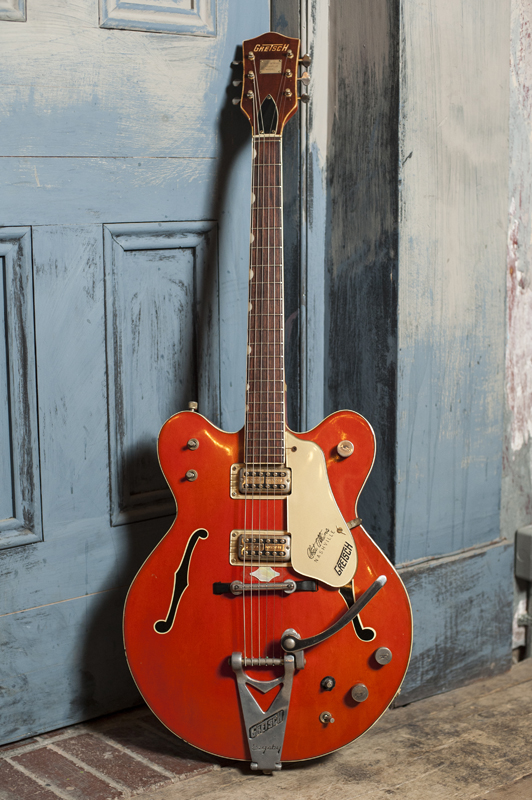
Though she’s also a skilled pianist, Aplin tends to write mainly on the guitar, and working with Potashnick over the last two years or so has inspired her to experiment more with electric instruments: “I felt like I was stuck writing with my acoustic guitar a little bit,” she recalls. “I never really got into electric guitars until about two and a half years ago. I went to LA, there’s an amazing shop called Norman’s Rare Guitars – he has loads of vintage guitars and stuff. I just went in and saw this amazing Gretsch, and I was like, ‘Alright, I’m done!’.
“I’m really into old guitars with stories; on my album, Luke had this amazing black and white 60s Silvertone, and it’s really a rickety old, kind of shit guitar! But it sounds amazing. It’s so crunchy, it’s amazing. And he sold it to me after we’d finished recording with it, so that’s really cool. Some of them can be really bad, but that one just happens to be incredible. It’s really chunky, but I’ve been using it in place of an acoustic guitar on some of my songs when I play live as well. It sounds amazing through an amp, or just kind of straight through with no pedals on. It’s one of those guitars you don’t kind of need to use pedals with.”
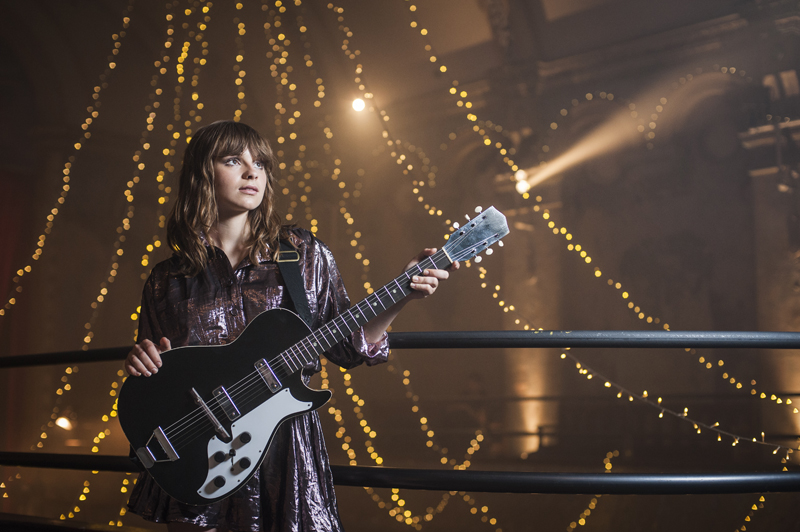
“I’ve got a Tele as well and I find that needs some sort of crunchy pedal on it to make it less twangy. The Silvertone is so crunchy, I love it, it kind of sounds horrible but in a good way! They are definitely coming back into fashion.”
“In a small charity shop, I found like a tiny little Casio Tone Bank keyboard from the nineties, it just has two octaves, with drum loops on it. We ended up recording lots of that as well and writing with those loops; I just love finding old, bad instruments!”
“We wonder if writing with loops contributed to the more band-like feel of many of the songs on the album, providing rhythmic inspiration that one might not get when writing solo with an acoustic guitar.”
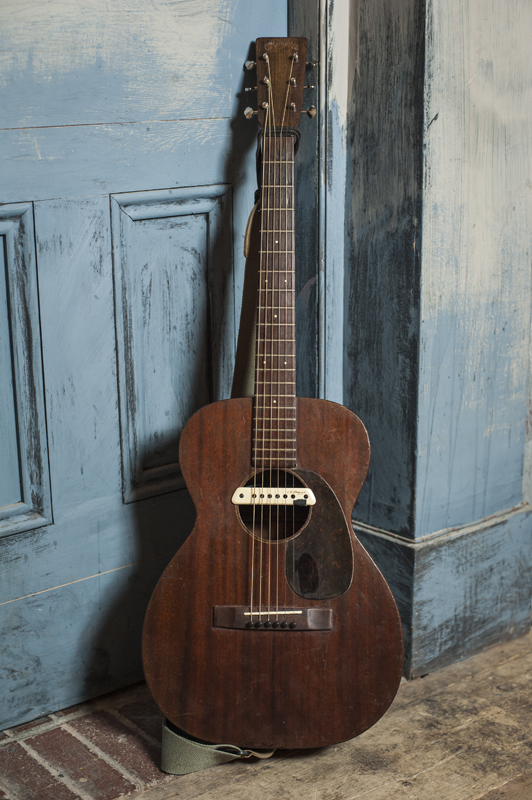
“If I was to sit down with a guitar, without anything… I don’t know where I’m going to start, it could go anywhere,” Aplin acknowledges. “But as soon as you put some sort of loop on, I have an idea straight away of what kind of feel I want. Whether it’s a rhythm for a riff, or a chord-y thing, or some kind of weird part with a loop pedal or a delay pedal… I’ll have that vibe and that feeling when I have a loop, definitely.”
“But the kind of band aspect [to the sound of the album] comes from Luke bringing in the rest of The Temperance Movement, who all recorded in different rooms of the house. I didn’t want it to be the sort of classic singer-songwriter album, I wanted it to have something about it. Rather than just go with the classic drum set-up in the corner of the room, I really wanted to do some weird percussive things, too; we definitely experimented. We never set up the drums in a normal way!”
Under the influence
When it came to experimentation, Aplin’s influences were varied: “We were listening to lots of Edward Sharpe & The Magnetic Zeros for percussion and sounds and quirkiness. And things that Chilly Gonzales has produced, he’s amazing; he did The Reminder by Feist, and we definitely listened to his guitar sounds and his vocal sounds. He recorded Feist’s vocal through an amp and mic’d it up and put distortion on it, things like that. So we definitely experimented there.

“I was really loving Beck’s Morning Phase album when I was making this album, mostly for the strings and the arrangements. The strings are incredible because they’re not too flouncy and too orchestral, they are really creepy and kind of Nick Cave-esque. We were definitely inspired by that. Also, Arcade Fire’s anthemic kind of sounds.
“I wasn’t afraid to experiment with synths, either. I went into a big studio for a day and got to play on loads of vintage synths. It was really fun to do that and not be scared, and just experiment really freely. There were about 100 synths in there and a couple of mics. It was mental.”
In search of imperfection
Out of the synth room and back in guitar land, it’s clear that Aplin finds inspiration in the allure of musicians who have their own voice on the instrument, rather than those with flawless technique: “I really like seeing an artist who clearly hasn’t been taught to play the guitar, playing the guitar. Or someone who has their own way.
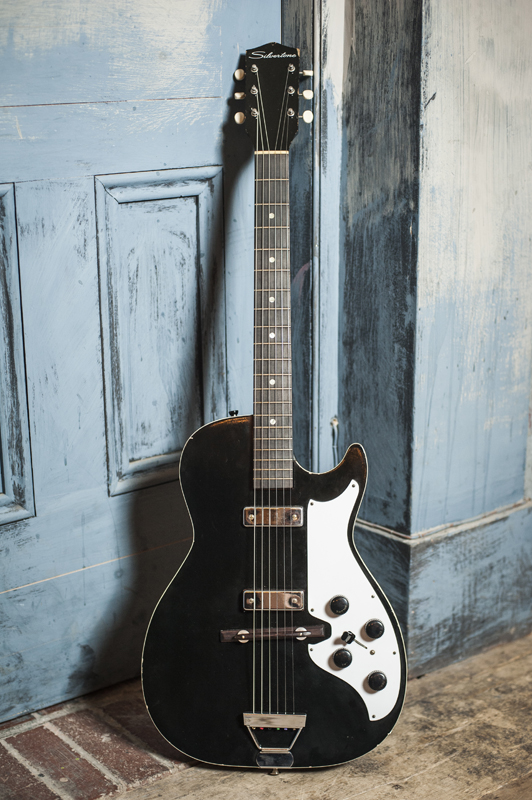
“Even though he was mostly an acoustic player, I’m really inspired by Nick Drake. I love his way of playing. It’s really imperfect, and just really unique to him. I also love the way Feist plays guitar, and Cat Power.”
“I don’t want it to look or sound like it’s perfect. It has to be really free and a bit wobbly, as long as it can sit around everything else. I taught myself completely, and I’ve found my way of playing… I’m constantly trying to make sure I don’t know everything! I like that element of not knowing everything perfectly, because in the writing you end up coming out with all these weird chord changes and weird things; I like having that element of discovery when you’re playing, and having to guess where you are going, because you never know what’s going to come out.”
Sharing responsibilities
When it came to recording the guitar parts on Light Up The Dark, the division of labour was split fairly evenly between Aplin and Potashnick. As they took quite a live approach during the recording sessions, it often depended on whether Aplin was playing keyboards: “Luke did a lot of the kind of riffs and the weird noises,” she explains.
“For example, on Light Up The Dark [the song], I did the piano, Luke played the guitar. On Skeleton, I did piano and the synthy stuff, and Luke played the guitar. Hurt, I played guitars on… I think we both played on everything to be honest. Most of the things I played piano on, Luke played the electric and then I would put my acoustic parts on afterwards.”
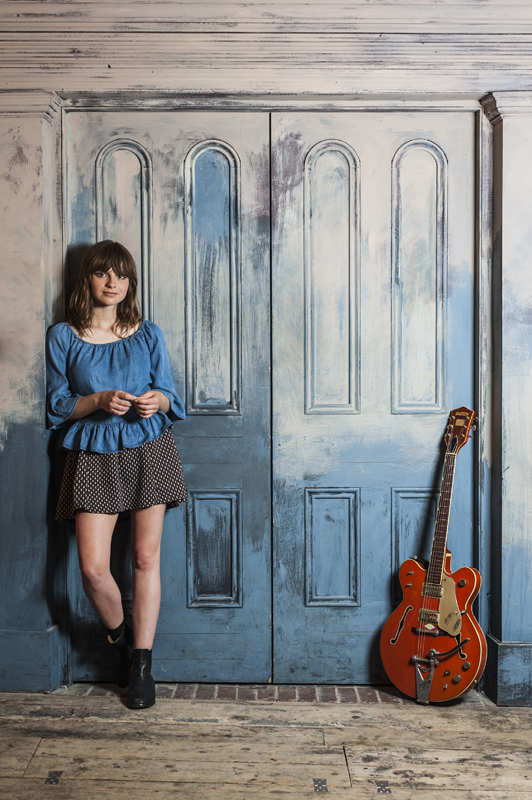
“There’s a song at the very end of the album, Don’t Break Your Heart On Me. I wrote that on my vintage Martin and it was the tuning from Pink Moon by Nick Drake. I’d got the tab book and I really wanted to learn the tuning – how does he do this? And yeah I used that tuning. That song was completely me, without Luke on it, which was really nice. I love buying tab books! But I never read the tab, all I wanted it for was the tunings.”
The aforementioned tunings are another aspect of six-string experimentation that Aplin enjoys: “I’ve started playing a lot more in standard tuning,” she reveals, “but I love a weird open tuning, you never know what you’re going to get. You just put it into some weird chord and that’s an open tuning.”
“I don’t know where any notes are, I don’t know what patterns there are or anything. It’s just kind of making it up as you go along, which is pretty cool. But it’s really important: record an iPhone voice memo every time!”
As the conversation turns to songwriting, it becomes apparent that Light Up The Dark saw Aplin take a fresh approach to the words that she penned as well as the music: “It was quite free. I guess the difference between my first album and this album is that I was able to write it all in the same space and time,” she says. “The real big change for me was being happy to write about other people’s stories and other things, and draw inspiration from places and travel.”
“On my first album, I assumed that because I’m a singer-songwriter I had to write about things that happened to me. When I realised that I didn’t have to do that, it was really cool, and it opened loads of doors for me.”
A song to change the world
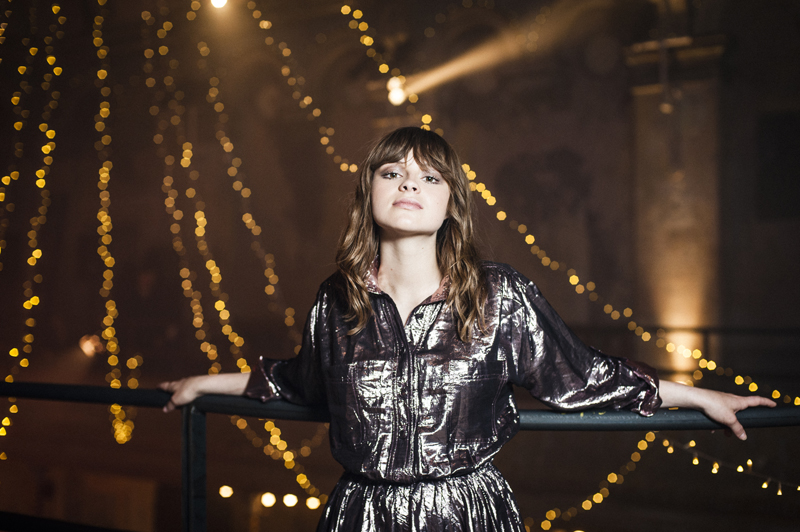
Given that Aplin lists the likes of Joni Mitchell, Bob Dylan and Neil Young among her favourite songwriters, it’s no surprise that storytelling has begun to enter into her own work, something that’s arguably a lost art in the landscape of modern pop. We ask Aplin if she thinks that’s true. “No artists nowadays really write about what’s goingon in the world,” she agrees. “There’s definitely a very clear palette for what’s on the radio and TV nowadays. Hopefully, it will start to change and people will start writing about things that are happening now, again– that’s why I really like Bob Dylan.
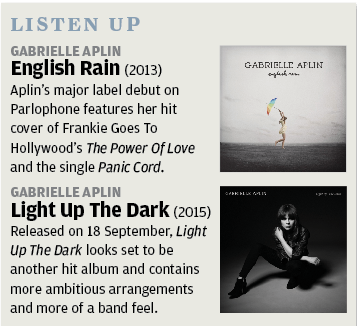
I think people are scared to do it because of the backlash – you are going to be offending someone somewhere, you are going to be upsetting someone somewhere by speaking out about something. You wouldn’t be speaking out unless it was a problem. Because of the internet and the media now, everything travels like fire, so maybe people are scared to do it and are warned not to. But it would only take a few people to do it and it wouldn’t be frowned upon anymore. I’d love to be able to write a song that changes the world one day, but it’s probably not going to happen!”
Perhaps Aplin will just have to settle for writing songs that have a huge impact on the fans who identify with them… “Absolutely,” she agrees. “That’s the great thing, knowing that someone’s listening and likes your story because it relates to them in some way.”
On the road again
The remainder of 2015 sees Gabrielle Aplin hit the road with her band in support of Light Up The Dark, something she’s looking forward to after spending so much time in the studio.
“Hopefully, I’m going to Japan in October and back to Australia, too. It’ll be good to get back out of the UK for a while, I’m getting itchy feet!”
Gabrielle has just her 2016 UK tour, which starts on 28th January and leads all the way up to 20th February, Ticket go on sale October 2nd at 9am.
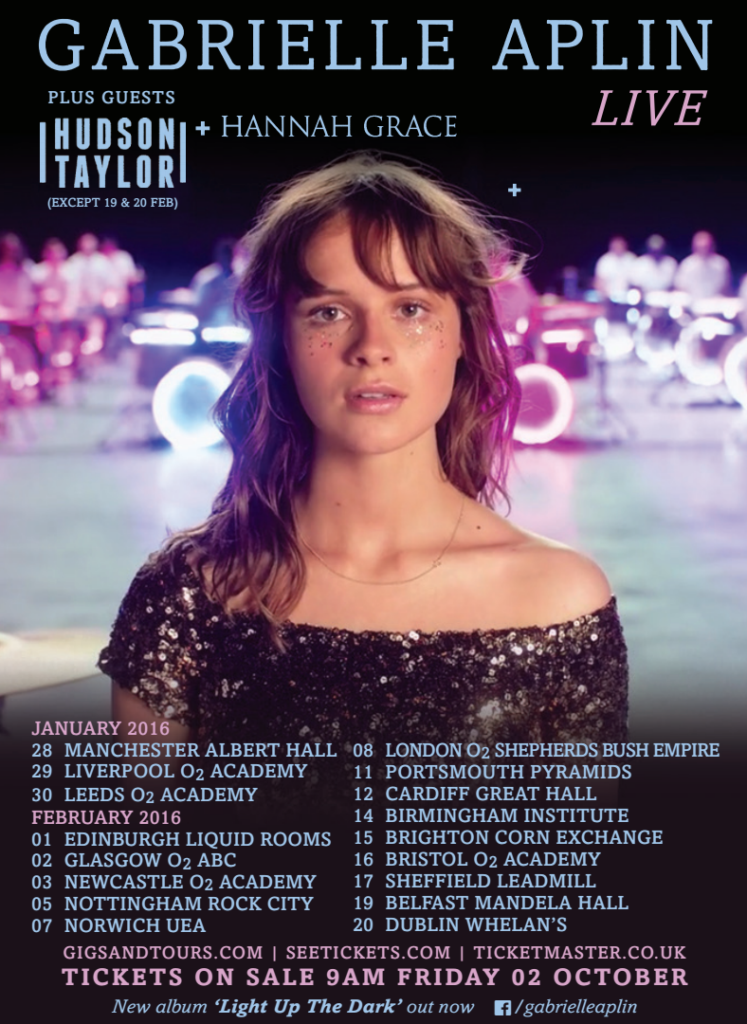
For more info about Gabrielle’s tour and news visit:
Story: Chris Vinnicombe
Photography: Eleanor Jane

